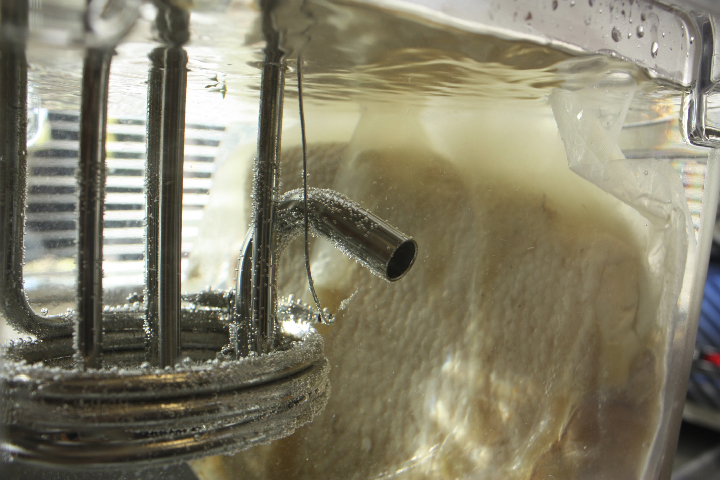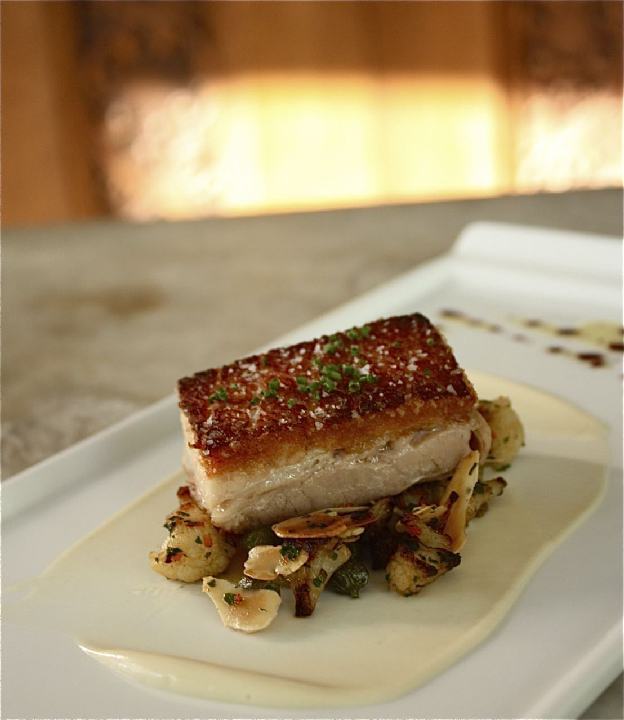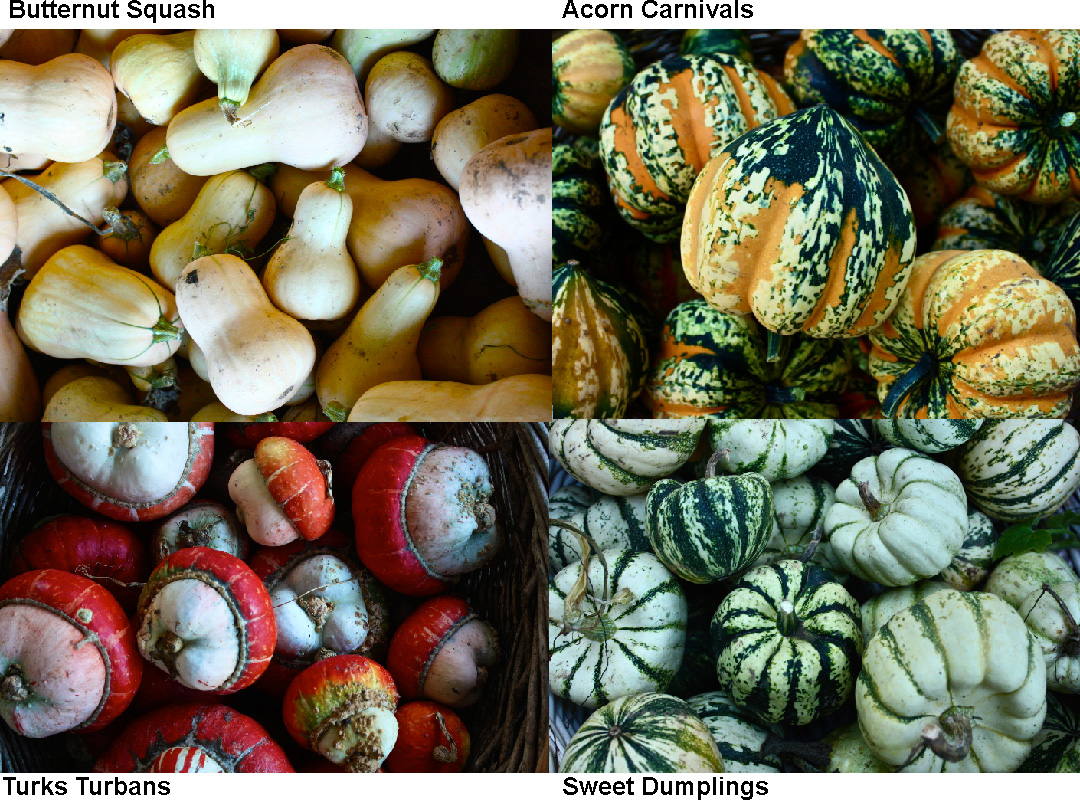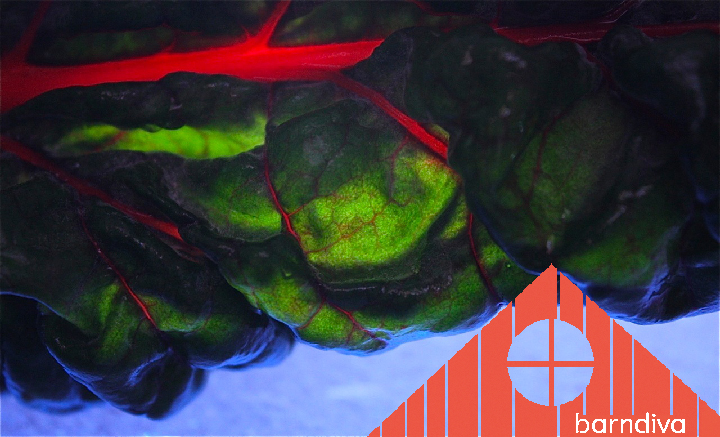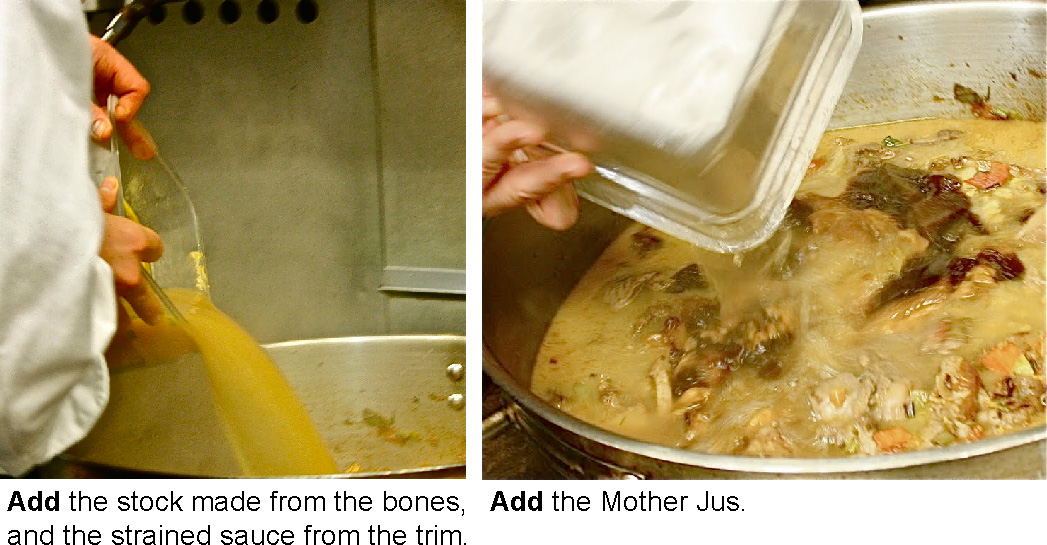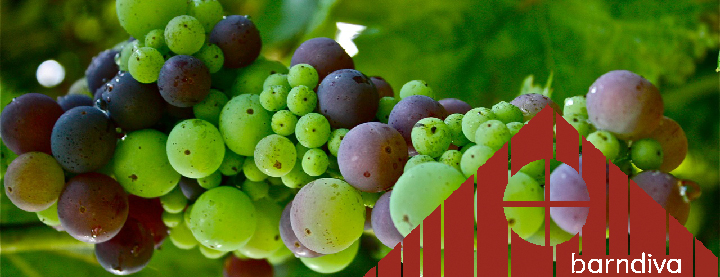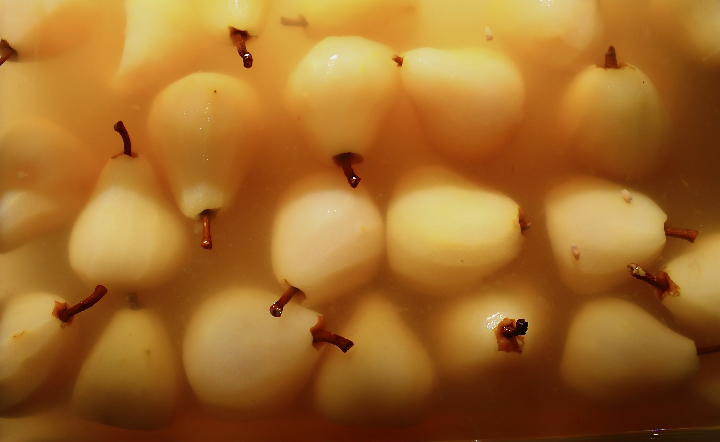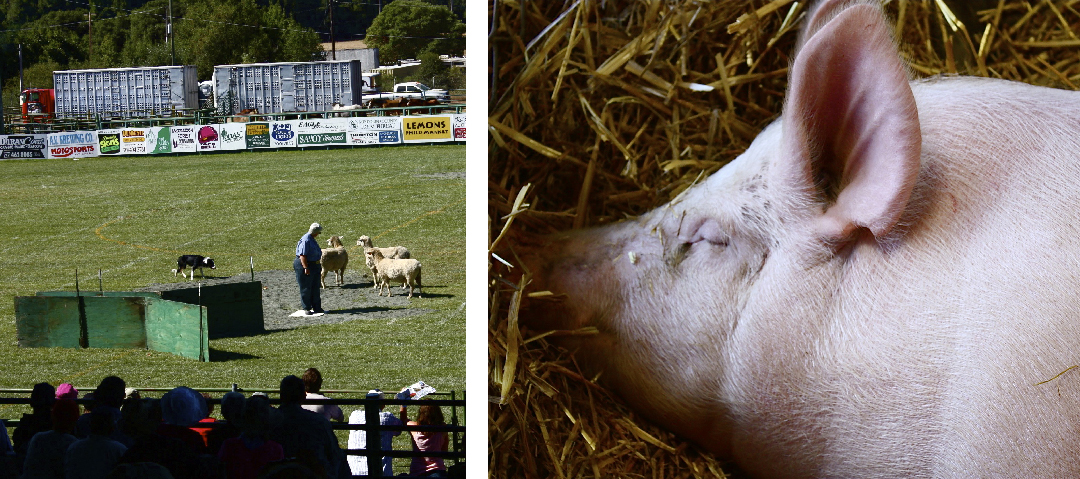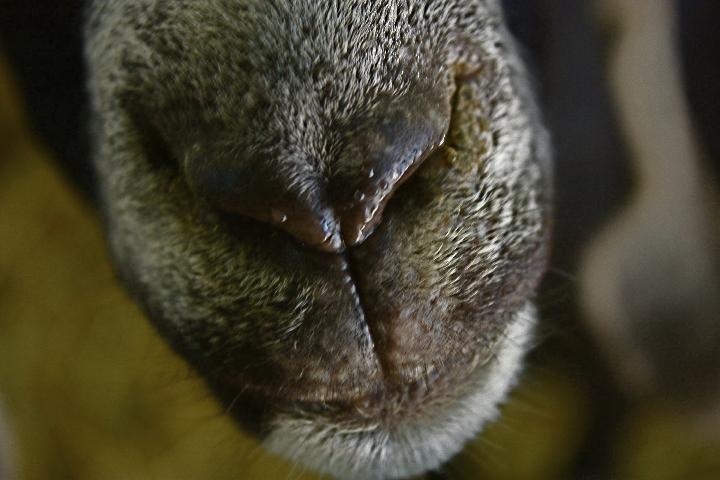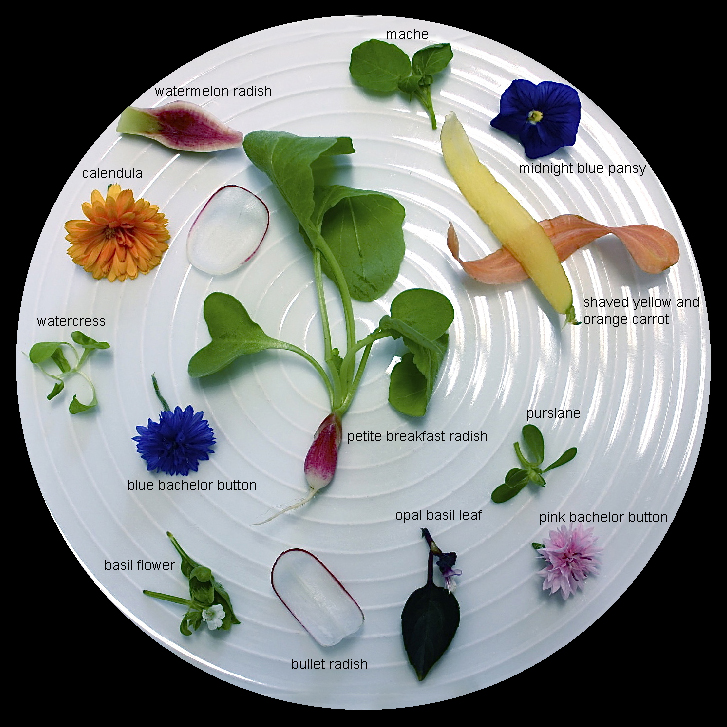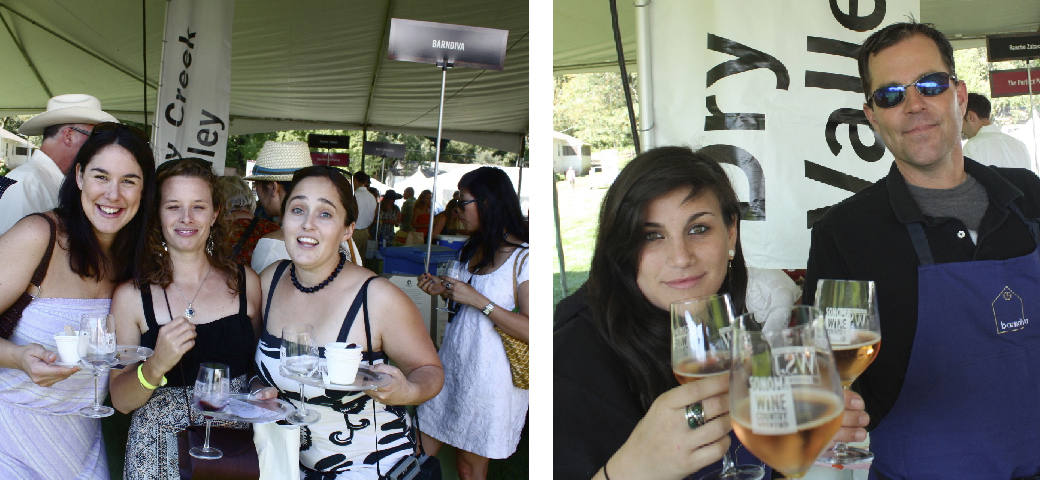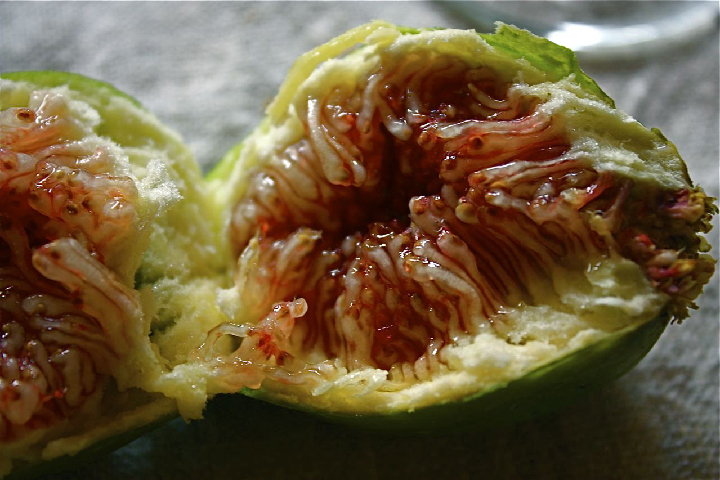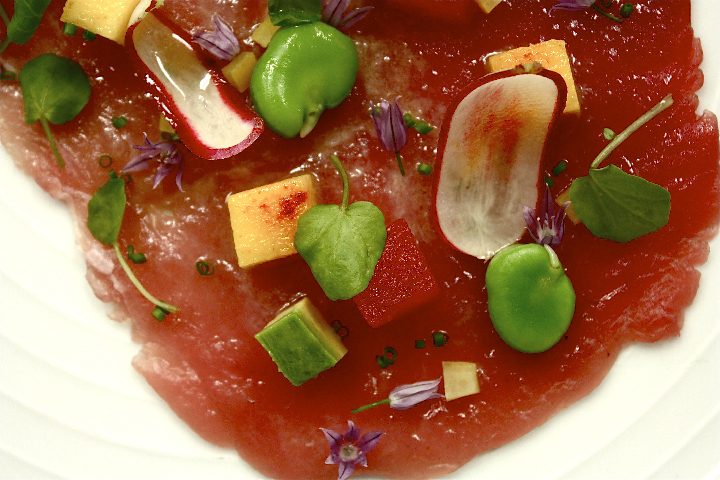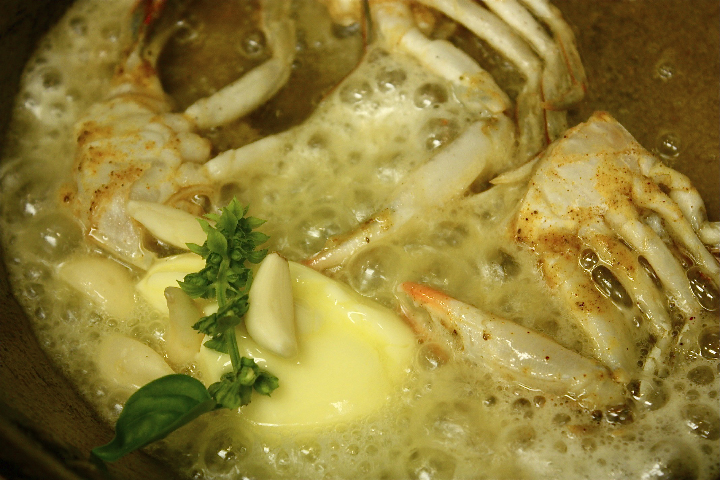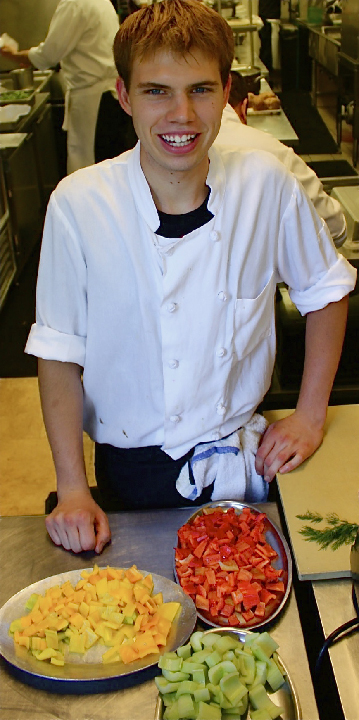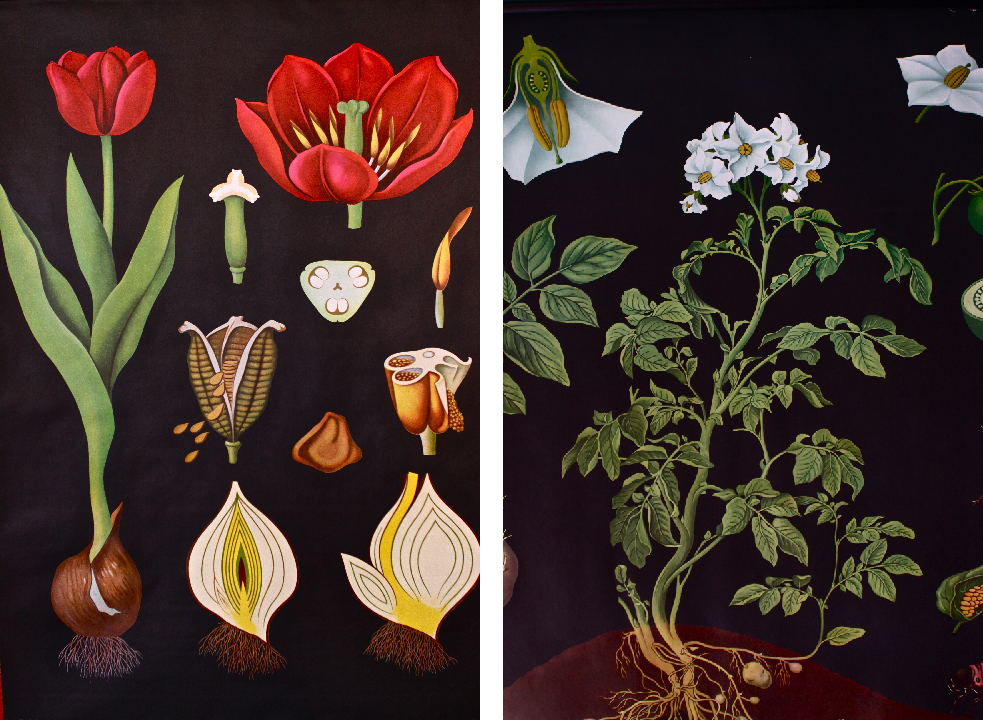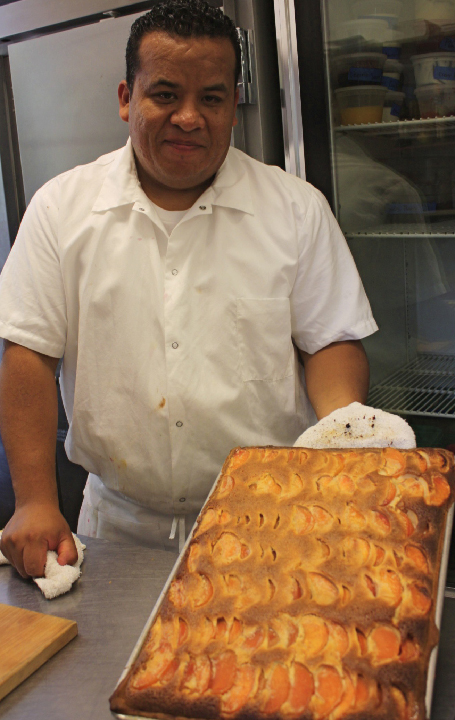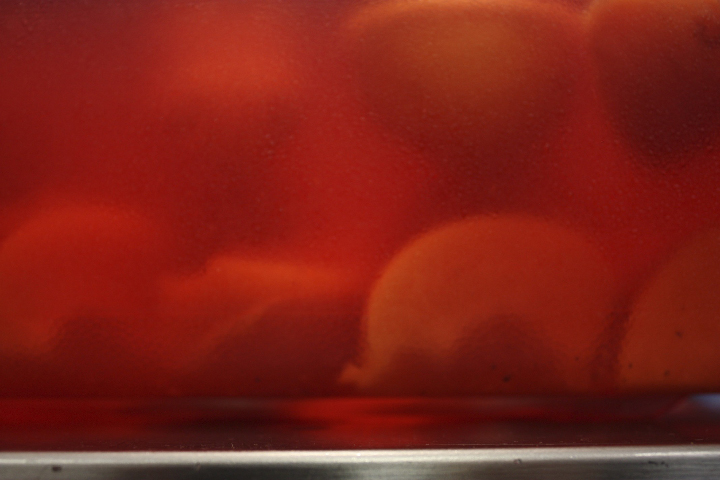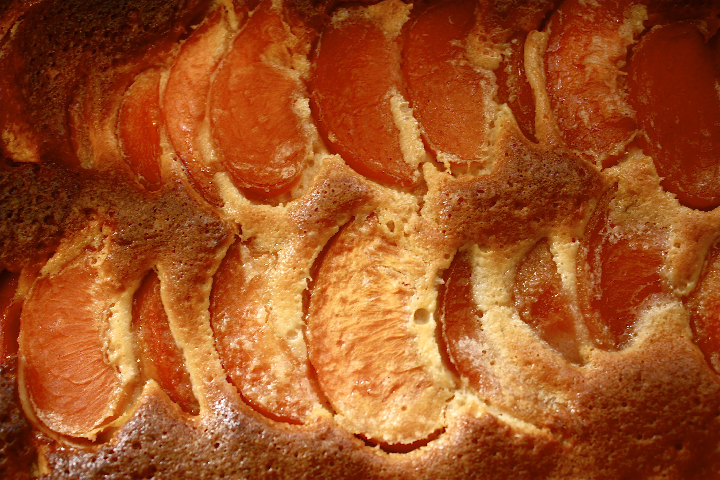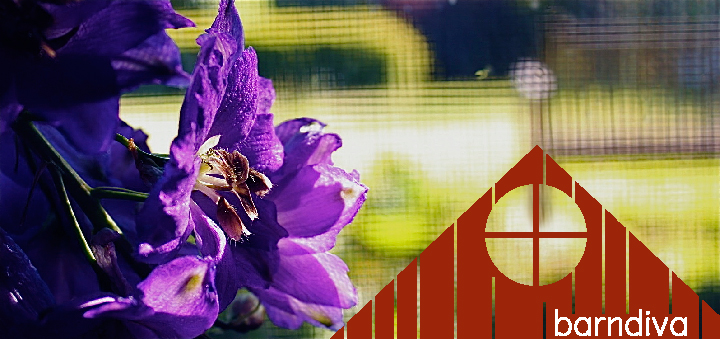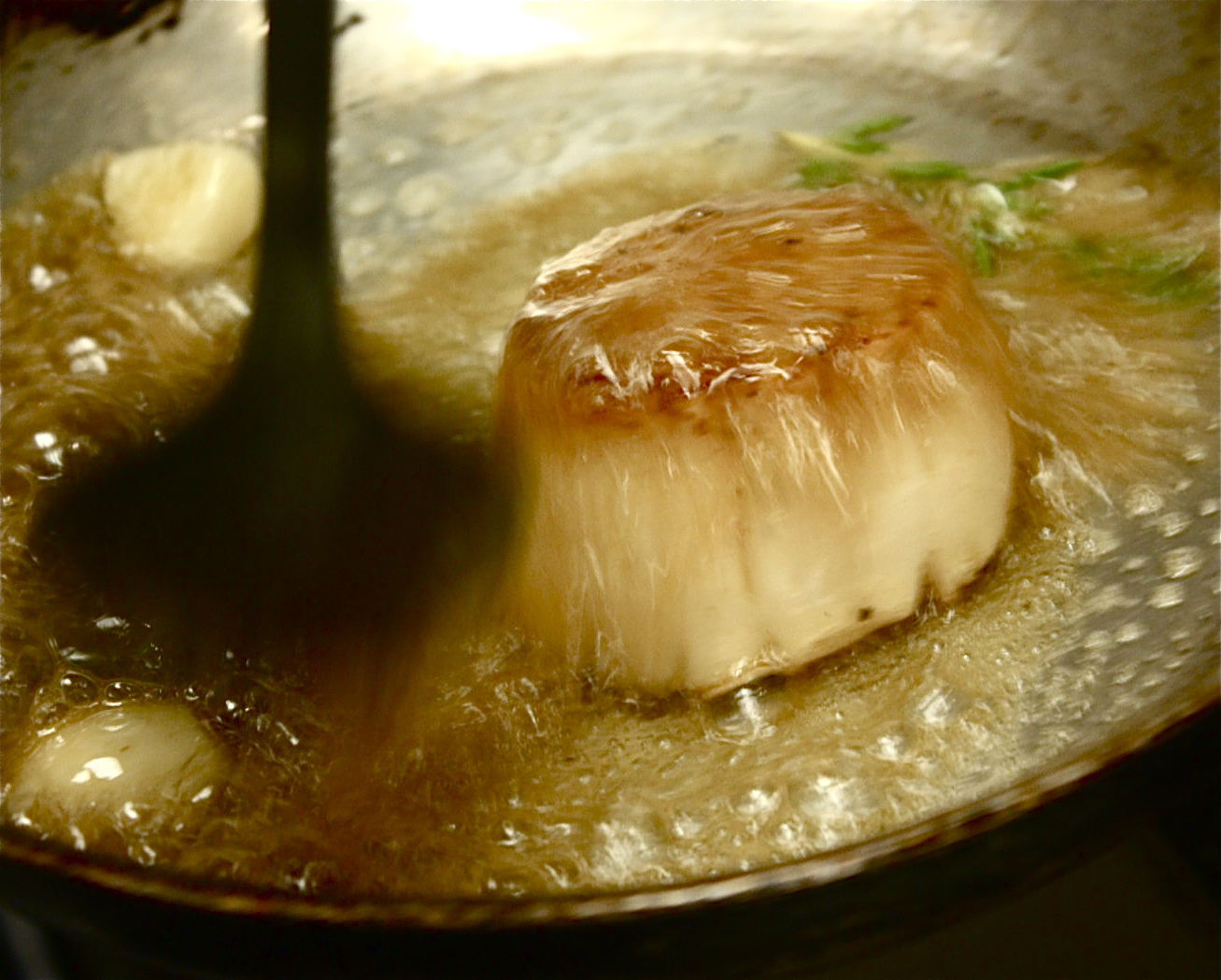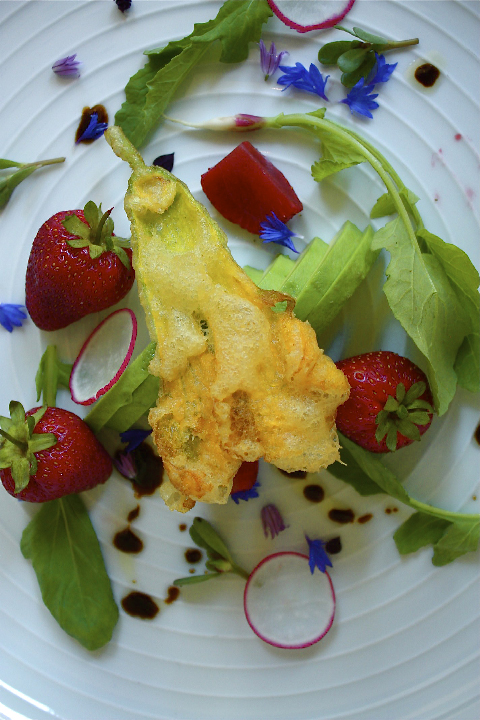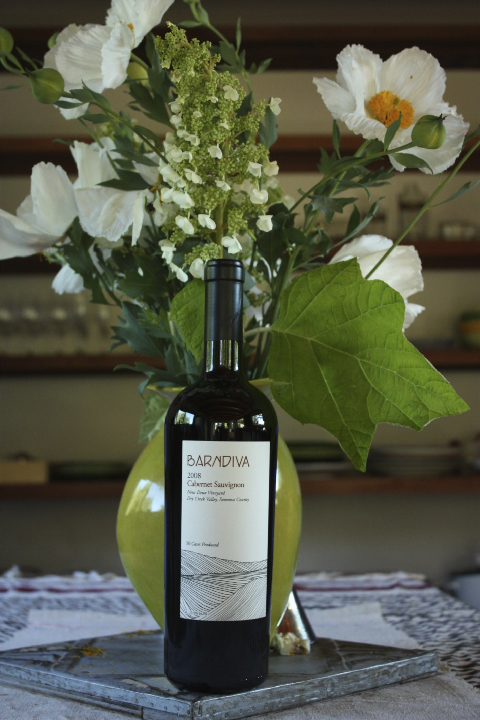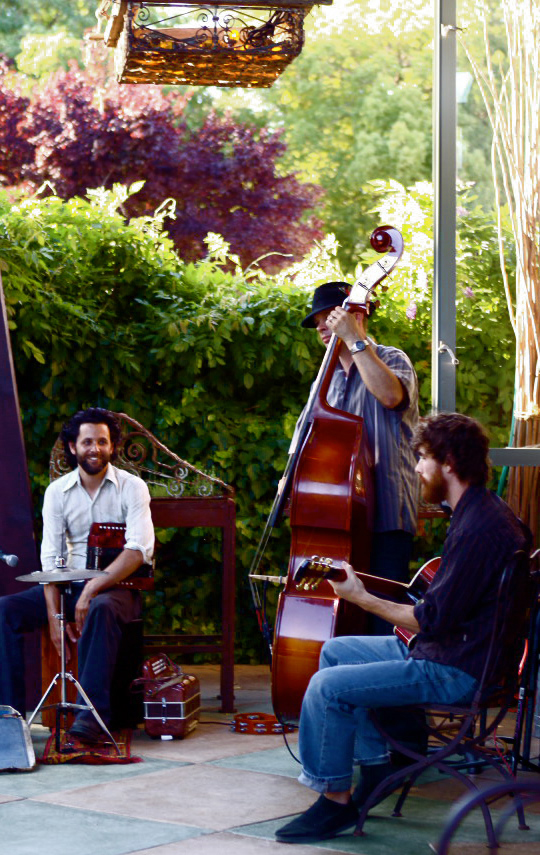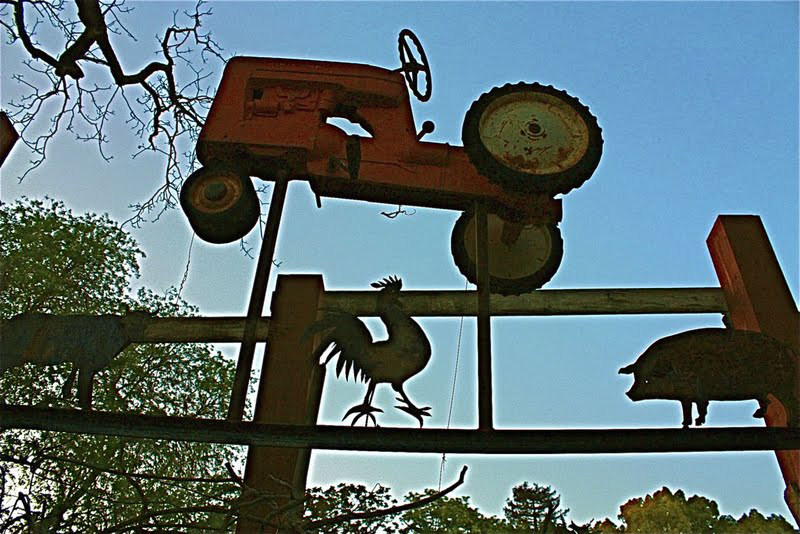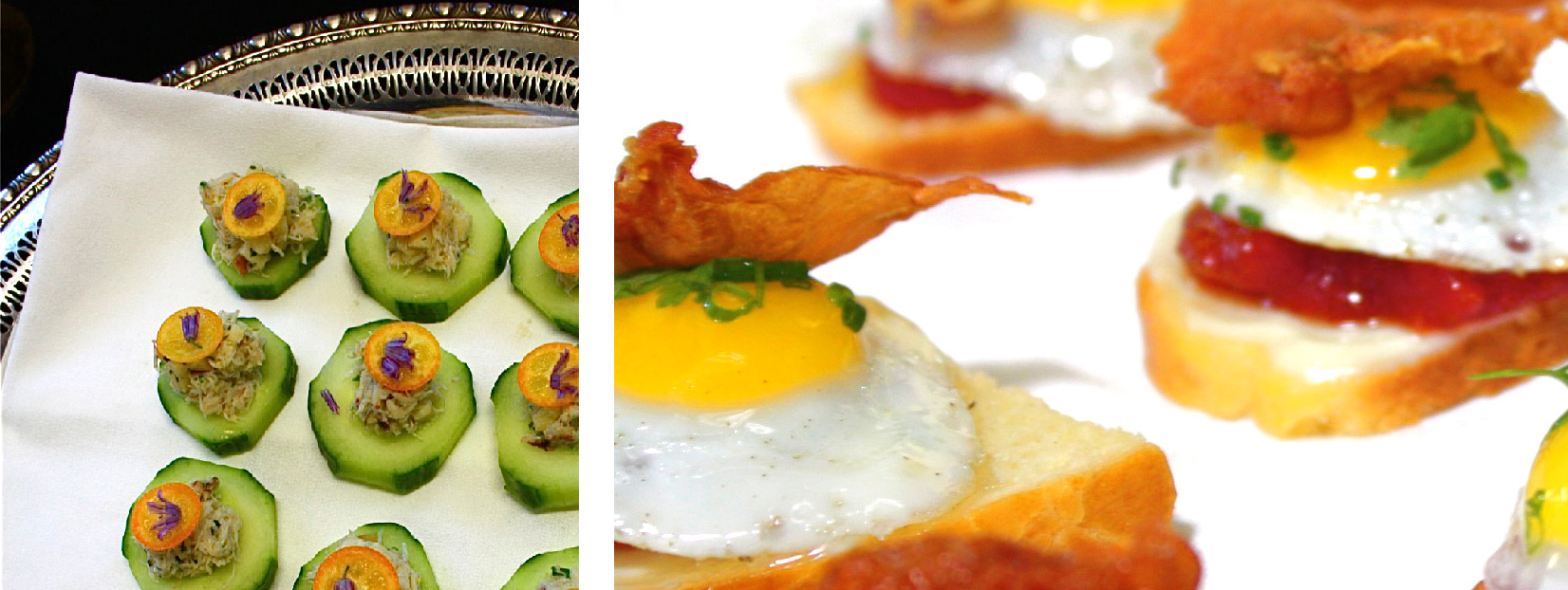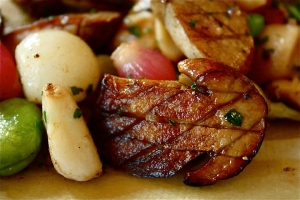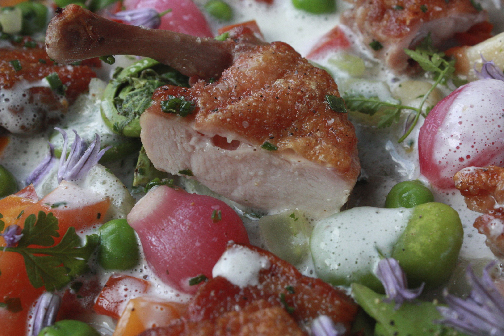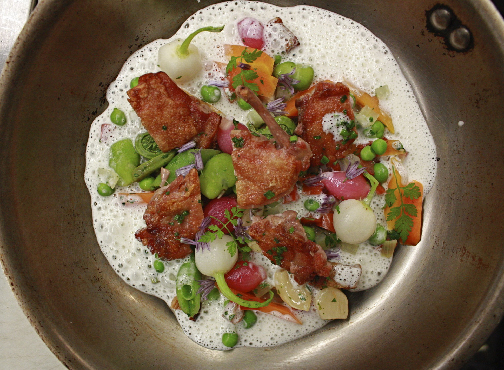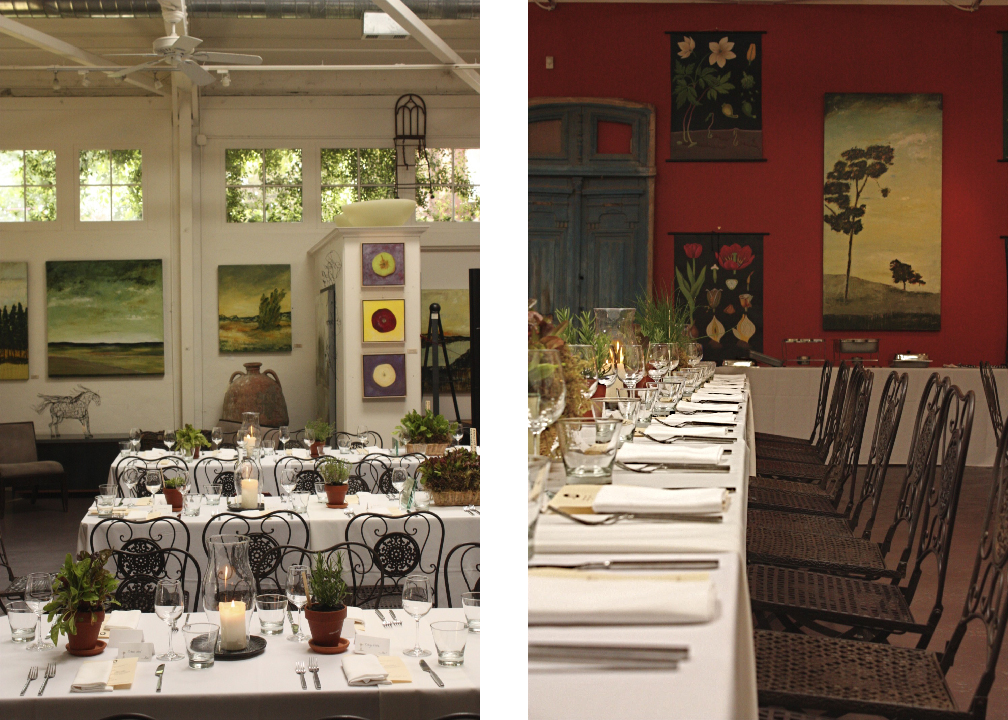Dish of the Week
New Fall Menu
 The garden dictates changes to our menus virtually every week of the year. But while there’s no hard line in the sand that can be drawn to signal the end of one season and the beginning of the next, some weeks, like this one, the juggling we do to accommodate the superlative produce our farmers bring to the kitchen door is more dramatic than others. While heirloom beans, sprouts, quince, and pancetta all started to arrive in abundance this week, so did the last of the heirloom tomatoes. The crazy weather that had left Lazero’s fig trees still bursting with fruit also had chestnuts falling from our trees on the ridge in Philo … I know, there are worse problems to have in life. But it makes calling the menu below the "definitive Autumn" menu a bit of a stretch.
The garden dictates changes to our menus virtually every week of the year. But while there’s no hard line in the sand that can be drawn to signal the end of one season and the beginning of the next, some weeks, like this one, the juggling we do to accommodate the superlative produce our farmers bring to the kitchen door is more dramatic than others. While heirloom beans, sprouts, quince, and pancetta all started to arrive in abundance this week, so did the last of the heirloom tomatoes. The crazy weather that had left Lazero’s fig trees still bursting with fruit also had chestnuts falling from our trees on the ridge in Philo … I know, there are worse problems to have in life. But it makes calling the menu below the "definitive Autumn" menu a bit of a stretch.
I love this time of year for the crisp snap to the mornings, coming in from the chill to a kitchen fragrant with the smell of quince. Creamy Mushroom Ragù and classic Frisée salads with lashings of bacon. Lobster Risotto scented with preserved lemons. Ryan’s incandescent Cauliflower Velouté with caramelized florets, raisins, and brown butter almonds (he calls it Trail Mix). The menu is a blessing right now, a garden-sensitive work in progress, the first of the delicious holiday season to come.
CAULIFLOWER Velouté, Caramelized Florets, Raisin, Caper, Almond, Caviar 15 Caramelized Diver SCALLOP, Gnocchi, Brussels Sprouts, Quince, Pancetta 16 BUTTER LETTUCE, Champagne Vinaigrette, Orange, Radish, Shaved Carrot 10 Crispy PORK BELLY, Heirloom Bean Cassoulet, Tomato Marmalade, Chive 14 BEET & ENDIVE, Avocado, Apple, Walnut, Warm Chèvre 13 FRISÉE LARDON, Creamy Cabernet Vinaigrette, Garlic Croutons, Fried Hen Egg 15 Local FIG Salad, Bellwether Farms San Andreas, Almond, Shaved Radish 12 Cowgirl Creamery “MT, TAM”, Fall Fruit, Radish, Marmalade 18 “THE ARTISAN” Hand Made Cheeses, Charcuterie, Seasonal Accompaniments 39
LOBSTER Risotto, Corn, Crispy Garlic Chips, Preserved Lemon, Watercress 30 Crispy Young CHICKEN, Roasted Artichoke, Pancetta, Ricotta & Egg Yolk Ravioli 25 Wild Alaskan HALIBUT, Caramelized Brussels Sprouts, Butternut Squash Agnolotti, Bacon 28 Niman Ranch Tenderloin of BEEF, Creamy Morel Mushrooms, Yukon Gold Potato Tots, Carrot Purée 32 Crispy Leg & Sliced Breast of Sonoma DUCK, Spinach, Glazed Cipollini Onion, Caramelized Pear, Foie Toast 29 Bacon Wrapped PORK Tenderloin, Yukon Gold Potato Purée, Apple Marmalade, Caramelized Endive 27
Goat Cheese CROQUETTES, Wildflower Honey, Lavender 10 BD FRITES, Spicy Ketchup 10 Preston OLIVE OIL, Maldon Salt, Port, Chive 4
TASTING MENU Five course 75 Wine pairing 40 Tasting menus available for the entire table only
Chef Ryan Fancher
In the Gallery
 All that glitters is not gold...and thankfully isn't priced like it either. These cuffs and bracelets just in for Xmas are some of the coolest ~ and most affordable ~ we've had in years. Beautiful handcrafted pieces are arriving everyday ~ wire sculpture by Ismael, textiles from Ethiopia, antiques from Burgundy, glass from Syria, ceramics from Japan, and beautiful paintings and steel sculpture...from just down the road. Shop local this holiday knowing you are supporting talented artisans from all over the world.
All that glitters is not gold...and thankfully isn't priced like it either. These cuffs and bracelets just in for Xmas are some of the coolest ~ and most affordable ~ we've had in years. Beautiful handcrafted pieces are arriving everyday ~ wire sculpture by Ismael, textiles from Ethiopia, antiques from Burgundy, glass from Syria, ceramics from Japan, and beautiful paintings and steel sculpture...from just down the road. Shop local this holiday knowing you are supporting talented artisans from all over the world.
Above: Brass Squares Bracelet: brass plated metal squares nestle together to create this light and fluid bracelet with a warm, burnished patina. Great worn in multiples. Strung on elastic to fit most wrists. $35/ each
 left: Square Bead Cuff: Handcrafted brass-plated metal beads strung on wire and finished in softly antiqued tones. $35
left: Square Bead Cuff: Handcrafted brass-plated metal beads strung on wire and finished in softly antiqued tones. $35
middle: Liquid Bronze Cuff: Cast from high quality brass, has molten appearance. $45
right: Crocheted Pyrite Bracelet: Lustrous Pyrite married with gold vermiel make for a striking pairing. Comprised of seven strands of small pyrite beads intricately woven and bound together with gold-filled wire and clasp. $150
All text Jil Hales. All photos Jil Hales and Dawid Jaworski (unless otherwise noted)






